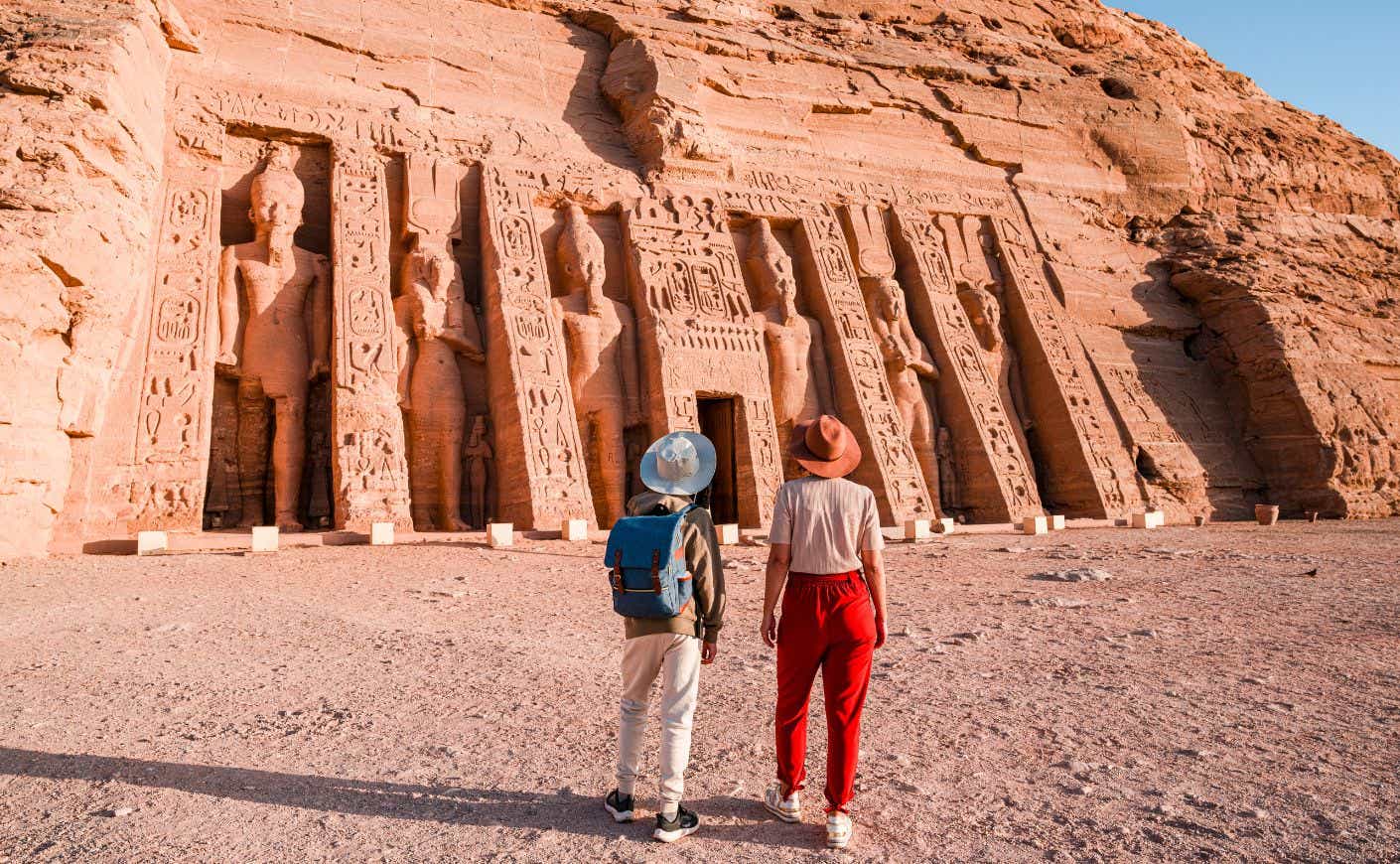Travelers are already dreaming big for 2026 — and not just in terms of miles logged.
After years of shifting travel habits, experts say wanderlust is swinging wide open, with people craving both the comfort of iconic destinations and the thrill of charting new territory. While the itineraries will vary — from America’s legendary national parks to once-in-a-lifetime adventures across the globe — a trend is becoming clear: Trips are getting bigger, bolder, and more intentional.
Think chasing misty waterfalls in Yosemite, trekking through Peru, digging into smoky barbecue in Austin, or even boarding an expedition cruise bound for Antarctica — yes, that’s possible now. Wherever the journey leads, travelers aren’t just checking boxes — they’re seeking experiences that feel unforgettable and worth the splurge.
Here’s a closer look at the destinations experts say will see more visitors next year.
Where to travel in 2026
U.S. National Parks
National parks are expected to be high on travelers’ lists for 2026, thanks in part to the influence of popular shows like Yellowstone, according to travel experts such as Sydney Brehm. And for many travelers, nothing beats the classics.
“Yosemite’s expecting to have its biggest year of visitation on record for 2025, and I don’t see that changing for next year,” says Brehm, a lead guide at Good Trip Adventures. Nestled in California’s Sierra Nevada mountains, Yosemite continues to draw visitors with its dramatic granite cliffs, giant sequoias, and world-famous waterfalls.
Brehm says other iconic spots — from the Grand Canyon to Zion, Yellowstone, and the nearby Tetons — aren’t slowing down either. However, she notes that travelers are becoming more savvy about how they plan, as the Trump administration has cut nearly a quarter of the National Park Service’s workforce through layoffs, resignations, and a hiring freeze — all while insisting the parks stay “open and accessible.”
However, the strain is evident: visitor centers and campgrounds have shortened hours or shut down, fee stations are dark, and emergency response is stretched thin.
Looking ahead, Brehm says it’s tough to predict exactly how 2026 will play out. “We’ve seen parks close their campgrounds a little early or open them a little later, change the way they’re managing reservation systems — the parks are doing the best they can. I think it’s our responsibility, especially as a tour company, to educate people we bring into these spaces, make sure they’re recreating responsibly, and understand that the parks are hurting.”
Against that backdrop, parkgoers haven’t been deterred, but they’re adapting in ways like steering clear of desert parks in the height of summer or heading out earlier in the season to avoid wildfire smoke. “I certainly think that’s a very real consequence of climate change,” she says.
Far-flung and exotic destinations
Lucy Mason, a travel coordinator at Atlas Adventures, says the destinations drawing the most interest — and where they’re selling the most group trips — include Egypt, Peru, Morocco, and Japan. Europe isn’t out of the picture, though: “We’re just seeing a surge of interest in spots that were once under the radar, like Umbria in Italy or Switzerland,” she says.
Mason attributes the pull toward these far-flung adventures to travelers seeking experiences that are both bucket-list worthy and immersive — experiences that go beyond the typical tourist trail.
“I am always so encouraged by both our clients and our guests on Atlas Adventures — they want more cultural and off-the-beaten-path experiences, they want to learn about new cultures and really immerse themselves in these once-in-a-lifetime experiences,” Mason tells us. “There’s definitely a move away from Instagram famous spots and more intrigue into how to discover new places.”
Less traditional hotspots, such as Saudi Arabia, Bhutan, and even Antarctica, are starting to emerge on travel radars, offering adventure and cultural intrigue for those looking beyond the usual routes.
Mason notes that Saudi Arabia is high on her own wish list, drawn to its mix of ancient history and ambitious new tourism projects. The country has been opening its doors more widely to international visitors, showcasing everything from Red Sea resorts to the desert region of AlUla.
Bhutan, meanwhile, continues to attract those seeking cultural immersion and Himalayan landscapes, guided by its “high value, low volume” model that limits visitor numbers through a Sustainable Development Fee and emphasizes sustainability. And Antarctica — long considered the final frontier — is attracting more tourism, thanks to expedition cruises that make the icy continent more accessible than ever.
Austin, Texas
Austin’s reputation has been rising over the past few years as events like Austin City Limits and SXSW attract bigger names (including our very own Katie Couric), and foodies expose the absolutely drool-worthy culinary scene. And that growth shows no signs of stopping. According to Chloe Buss, regional director of field operations at the short-term rental start-up AvantStay, it’s shaping up to be one of the top destinations next year. “Austin will be our biggest jewel,” she says. Why? The barbecue, Tex-Mex, and impressive festival lineups, for starters. Plus, the very recent surge of interest in Formula 1 racing (thank you, Netflix and Brad Pitt) has led to an increase in attendees at Austin’s annual Formula 1 U.S. Grand Prix.
But even if you skip the headline events, Buss says Austin still delivers — and stays true to the city’s famous “Keep Austin Weird” vibe.
“Austin’s unique because you can go from a world-class festival to a dive bar where a local band’s playing, sip a vodka soda out of a plastic cup, and have just as great a time. It’s the best of both worlds — and that’s what keeps drawing people there,” she tells us.
Upstate New York
Buss also highlights upstate New York as a rising favorite. “Lake Tahoe will always be a draw,” she says, “but what about the Hudson Valley? There are so many other beautiful places to explore.”
Take Ithaca, for example: the town topped CNN Travel’s 2025 list of Best Towns in America to Visit, thanks to its dramatic waterfalls and gorges at spots like Buttermilk Falls and Robert H. Treman State Park. CNN also praised the town’s lively cultural scene, from long-running operations like the Ithaca Farmers Market to newer favorites such as South Hill Cider.
More broadly, tourism across upstate New York has been booming, with Central New York alone seeing an 80 percent jump in visitor spending since 2019, and regions like the Catskills and Adirondacks also drawing record crowds as travelers seek out nature and charm.
Planning smarter in 2026
Of course, not every trip has to happen right away — or break the bank. Mason says that if dream destinations feel out of reach, it can help to plan further out. “For travelers on a tighter budget, it can make sense to hold off on Japan for a few years,” she explains. “These spots go through waves of popularity, and Covid really shifted those patterns.”
Another money-saving tip Mason emphasizes is investing in travel insurance — something she says she’s relied on “more times than I can count.” Insurance can help cover delays, lost luggage, theft, or medical emergencies. In the U.S., she adds, many policies also include coverage for trip cancellation or abandonment in the event of a serious illness or the death of a loved one.
Whether you travel now or later, planning is half the fun, right? And that can start anytime.













